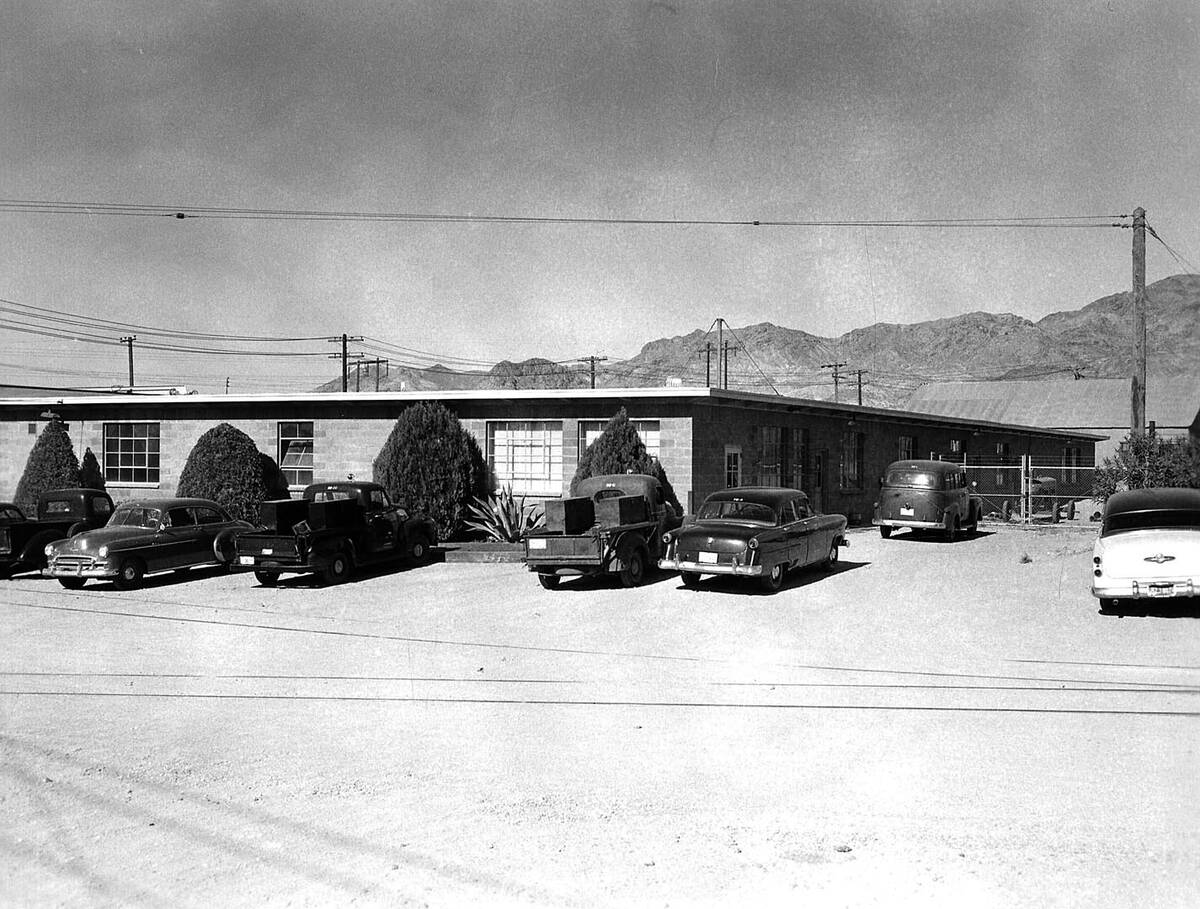City Shops project making the grade
If you have walked or driven past the corner of Colorado and Birch streets recently, you may have noticed some heavy equipment grading the land and a sign identifying the project as being for the Boulder City Shops.
But, before you start planning a shopping spree, this project is not about those kind of shops.
The Public Works and Utilities Maintenance Yard, casually known as the City Shops, has outgrown its current capacity for inventory, equipment, and staffing, prompting the coming of expansion.
To address the lack of space, the secured area will be extended to Birch Street and Colorado Street. According to Director of Public Works Gary Poindexter, the expansion will feature a split-face brick wall along Birch Street, while a privacy fence will border Colorado Street. No new buildings will be constructed as part of this expansion.
In addition to these changes, a sidewalk on Birch Street from Railroad Avenue to Colorado Street will be added, along with ADA-compliant curb ramps at the intersection of Birch Street and Colorado Street to enhance pedestrian connectivity between the residential area and the city’s trail systems. Another objective of the expansion is to alleviate commercial traffic in the residential area by directing it through the north entrance of the maintenance yard.
Poindexter explained what is behind the expansion.
“The city’s maintenance yard, public works and utilities maintenance, all of the maintenance and utilities staff work out of there. All of our equipment, all of our inventory, everything is stored there,” he explained.
“We’ve grown out of what we have there,” Poindexter continued. “Of course, there is no funding to build us anything bigger so the idea was to expand to the north property which would allow us to do material storage. We’re not going to build any kind of buildings out there, we’ll just keep what we have up top. We’re looking for space for inventory and equipment.”
Poindexter explained that, in addition to needing more space, a big part of the reason for the change is to control commercial truck traffic. “The goal is to get the commercial traffic out of our residential area.
“We have houses right across from our main gate and deliveries come through there,” he said. “We want to get deliveries coming through the north gate so they are not coming through the residential area. Right now, trucks tend to come to the front gate because there is staff there. The new back gate will have an intercom and cameras so we know when someone is there. Right now, if they go to the back gate no one knows they are there.”
When questioned about how the property is on two different elevations, Poindexter said it is actually more complicated than that.
“It’s actually more than two levels,” he said. “It’s kind of crazy how the whole area was put together years ago. It was like a cookie cutter. So we definitely wanted to clean it up. We’re looking at putting a brick wall there at Birch, that way it blends in with the neighborhood and looks nice. And by redirecting traffic, we’ll avoid having trucks blocking the roadway.”
A side benefit, some point in the future might include being able to re-purpose other historic buildings, including the old airport hangar and the old DWP building.
“We have gotten to the point with equipment where we are saying, ‘OK, where do we park this,’” Poindexter said. “The hangar is specifically utility storage and the yard we’re working on is public works and utilities. In the future, if we are able to put a structure on the upper part of the lot, then we could empty out the old airport hangar. Down the road, that would be part of the goal.”
“Right now, storage is spread around town,” he said. “We have the old hangar, we have the old DWP building. If we need electrical equipment we have to go to one place; we need a filter, we go over there. It’s not efficient.”
Poindexter also pointed out that the increased and more centralized storage facilities can actually save the city money.
“I’ll use our landscape supervisor as an example,” he said. “He’ll order seed or fertilizer when it’s on discount. So instead of waiting until we need it, which is the same time everyone else needs it and the prices go up, he saves us a lot of money. I love that he does that. But we can’t do as much of that as we would like because we’re limited on storage space.”
Don’t expect to see renderings or concrete plans for a while. Right now, the area is just being graded out. Then a survey will be required and after that, a design can be put together. For now, just cleaning up the site is seen as an improvement.
“We’ve gotten it cleaned up and it does look a lot better now,” Poindexter said. “It was looking a little shabby and we want to be a good neighbor.”


















